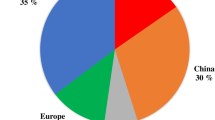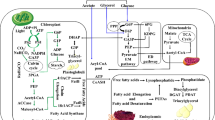Abstract
Reducing the amount of carbon emissions has been a formidable challenge especially to countries experiencing rapid economic growth. This prompted the development of various materials and methodologies to capture emissions to address climate change. The current study aimed to contribute in the development of carbon dioxide capture through the biological approach by using microorganisms such as microalgae. Biological fixation involving microalgae involves a complex process that has not been fully understood as current experimental methods can only deliver analysis on a macroscopic scale. The study demonstrated the dynamics of carbon dioxide molecules in the atomic scale using molecular dynamics. The permeation coefficient of carbon dioxide molecules was calculated at different range of temperature and salinity using the inhomogeneous solubility diffusion model. The GROMOS53a6 and SPC force field was used for the interaction of molecules. Moreover, the force autocorrelation function was used to calculate the diffusion coefficient. The resulting diffusion coefficients were in a good agreement with experimental data. The highest permeation coefficient of 2.3994 × 10−3 cm s−1 was calculated at 330 K 0.55 M conditions. Due to the nonpolar nature of carbon dioxide molecule, the mobility as it permeates inside the bilayer was not affected. Hence, the study suggests that the temperature and salinity does not prevent nor significantly affects the permeability of microalgae lipid membrane from carbon dioxide molecules.






Similar content being viewed by others
References
Assunção J, Batista AP, Manoel J, da Silva TL, Marques P, Reis A, Gouveia L (2017) CO2 utilization in the production of biomass and biocompounds by three different microalgae. Eng Life Sci 17:1126–1135
Bemporad D, Essex JW, Luttmann C (2004) Permeation of small molecules through a lipid bilayer: a computer simulation study. J Phys Chem B 108:4875–4884
Berendsen HJC, Postma JPM, Van Gunsteren WF, Hermans J (1981) Interaction models for water in relation to protein hydration. Intermolecular Forces:331–342
Böckmann RA, Hac A, Heimburg T, Grubmüller H (2003) Effect of sodium chloride on a lipid bilayer. Biophys J 85:1647–1655
Brown LM (1996) Uptake of carbon dioxide from flue gas by microalgae. Energy Convers Manag 37:1363–1367
Davidson J, Cullen E (1957) The determination of diffusion coefficients of sparingly soluble gases in liquids. Trans Inst Chem Eng 35:51–60
Fang TH, Chang WJ, Chiu JW (2006) Study on coalescent properties of ZnO nanoclusters using molecular dynamics simulation and experiment. Microelectron J 37:722–727
He L, Subramanian VR, Tang YJ (2012) Experimental analysis and model-based optimization of microalgae growth in photo-bioreactors using flue gas. Biomass Bioenergy 41:131–138
Hsin J, Arkhipov A, Yin Y, Stone J, Schulten K (2008) Using VMD: an introductory tutorial. Curr Protoc Bioinformatics 24:5.7.1–5.7.48
Ingólfsson HI, Melo MN, van Eerden FJ, Arnarez C, Lopez CA, Wassenaar TA, Periole X, de Vries AH, Teilemen DP, Marrink SJ (2014) Lipid organization of the plasma membrane. J Am Chem Soc 136:14554–14559
Jedlovszky P, Mezei M (2000) Calculation of the free energy profile of H2O, O2, CO, CO2, NO, and CHCl3 in a lipid bilayer with a cavity insertion variant of the Widom method. J Am Chem Soc 122:5125–5131
Jing Y, Wei L, Wang Y (2013) Molecular simulation of MCM-41: structural properties and adsorption of CO2, N2 and flue gas. Chem Eng J 220:264–275
Kao CY, Chen TY, Chang YB, Chiu TW, Lin HY, Chen CD, Chang JS, Lin CS (2014) Utilization of carbon dioxide in industrial flue gases for the cultivation of microalga Chlorella sp. Bioresour Technol 166:485–493
Khalid M, Khalid N, Ahmed I, Hanif R, Ismail M, Janjua HA (2017) Comparative studies of three novel freshwater microalgae strains for synthesis of silver nanoparticles: insights of characterization, antibacterial, cytotoxicity and antiviral activities. J Appl Phycol 29:1851–1863
Leonenko ZV, Finot E, Ma H, Dahms TES, Cramb DT (2004) Investigation of temperature-induced phase transitions in DOPC and DPPC phospholipid bilayers using temperature-controlled scanning force microscopy. Biophys J 86:3783–3793
Manrique R, Moreno JL, Villagracia AR, Ubando A, Kasai H, Arboleda N, David M, Culaba A (2018a) Effects of salinity on the CO2 permeation across lipid bilayer for microalgae biofixation: a molecular dynamics study. J Appl Phycol 30:55–61
Manrique R, Ubando AT, Culaba AB, Villagracia AR, David M, Arboleda N, Kasai H (2018b) CO2 transport from flue gas emission across the lipid membrane for microalgae biofixation. In: HNICEM 2017 - 9th International Conference on Humanoid, Nanotechnology, Information Technology, Communication and Control, Environment and Management.
Marrink SJ, Berendsen HJC (1994) Simulation of water transport through a lipid membrane. J Phys Chem 98:4155–4168
Moheimani NR (2016) Tetraselmis suecica culture for CO2 bioremediation of untreated flue gas from a coal-fired power station. J Appl Phycol 28:2139–2146
Olofsson M, Lindehoff E, Frick B, Svensson F, Legrand C (2015) Baltic Sea microalgae transform cement flue gas into valuable biomass. Algal Res 11:227–233
Raven JA, Beardall J (2016) The ins and outs of CO2. J Exp Bot 16:1–13
Sajjadi B, Chen W, Raman A, Ibrahim S (2018) Microalgae lipid and biomass for biofuel production: A comprehensive review on lipid enhancement strategies and their effects on fatty acid composition. Renew Sustain Energy Rev 97:200–232
Shinoda W, Mikami M, Baba T, Hato M (2004) Molecular dynamics study on the effects of chain branching on the physical properties of lipid bilayers: 2. Permeability J Phys Chem B 108:9346–9356
Shinoda W, Shinoda K, Baba T, Mikami M (2005) Molecular dynamics study of bipolar tetraether lipid membranes. Biophys J 89:3195–3202
Sugii T, Takagi S, Matsumoto Y (2005) A molecular-dynamics study of lipid bilayers: Effects of the hydrocarbon chain length on permeability. J Chem Phys 123:184714
Tang D, Han W, Li P, Miao X, Zhong J (2011) CO2 biofixation and fatty acid composition of Scenedesmus obliquus and Chlorella pyrenoidosa in response to different CO2 levels. Bioresour Technol 102:3071–3076
Taylor MT, Runčevski T, Oktawiec J, Gonzalez M, Siegelman R, Mason J, Ye J, Brown C, Long J (2016) Tuning the adsorption-induced phase change in the flexible metal-organic framework Co(bdp). J Am Chem Soc 138:15019–15026
Thomas WJ, Adams MJ (1965) Measurement of the diffusion coefficients of carbon dioxide and nitrous oxide in water and aqueous solutions of glycerol. Trans Faraday Soc 61:668–673
United Nations/Framework Convention on Climate Change (2015) Paris Agreement. 21st Conf Parties. doi: FCCC/CP/2015/L.9.
Unver AA, Himmelblau DM (1964) Diffusion coefficients of CO2, C2H4, C3H6, and C4H8 in water from 6° to 65° C. J Chem Eng Data 9:428–431
Van Der Spoel D, Lindahl E, Hess B, Groenhof G, Mark AE, Berendsen HJ (2005) GROMACS: Fast, flexible, and free. J Comput Chem 26:1701–1718
Versteeg GF, van Swaal WPM (1988) Solubility and diffusivity of acid gases (CO2, N2O) in aqueous alkanolamine solutions. J Chem Eng Data 33:29–34
Funding
The authors would like to acknowledge the Ministry of Science and Technology, Taiwan, for their financial support under grant number MOST-107-3113-E-006-009.
Author information
Authors and Affiliations
Contributions
Manrique, R developed the design of experiments, undertake the simulations, and numerical calculations. Wu, W and Chang, JS carried out the review, data interpretation and analysis of the results, critical revision and other important intellectual content. All the authors contributed to the writing and editing the final manuscript.
Corresponding authors
Ethics declarations
Conflict of interest
The authors declare that they have no conflicts of interest.
Additional information
Publisher’s note
Springer Nature remains neutral with regard to jurisdictional claims in published maps and institutional affiliations.
Electronic supplementary material
ESM 1
(PDF 2517 kb)
Rights and permissions
About this article
Cite this article
Manrique, R., Wu, W. & Chang, JS. A molecular dynamics study on the CO2 permeability of microalgae lipid membrane. J Appl Phycol 32, 291–297 (2020). https://doi.org/10.1007/s10811-019-01940-4
Received:
Revised:
Accepted:
Published:
Issue Date:
DOI: https://doi.org/10.1007/s10811-019-01940-4




